Tag: Video
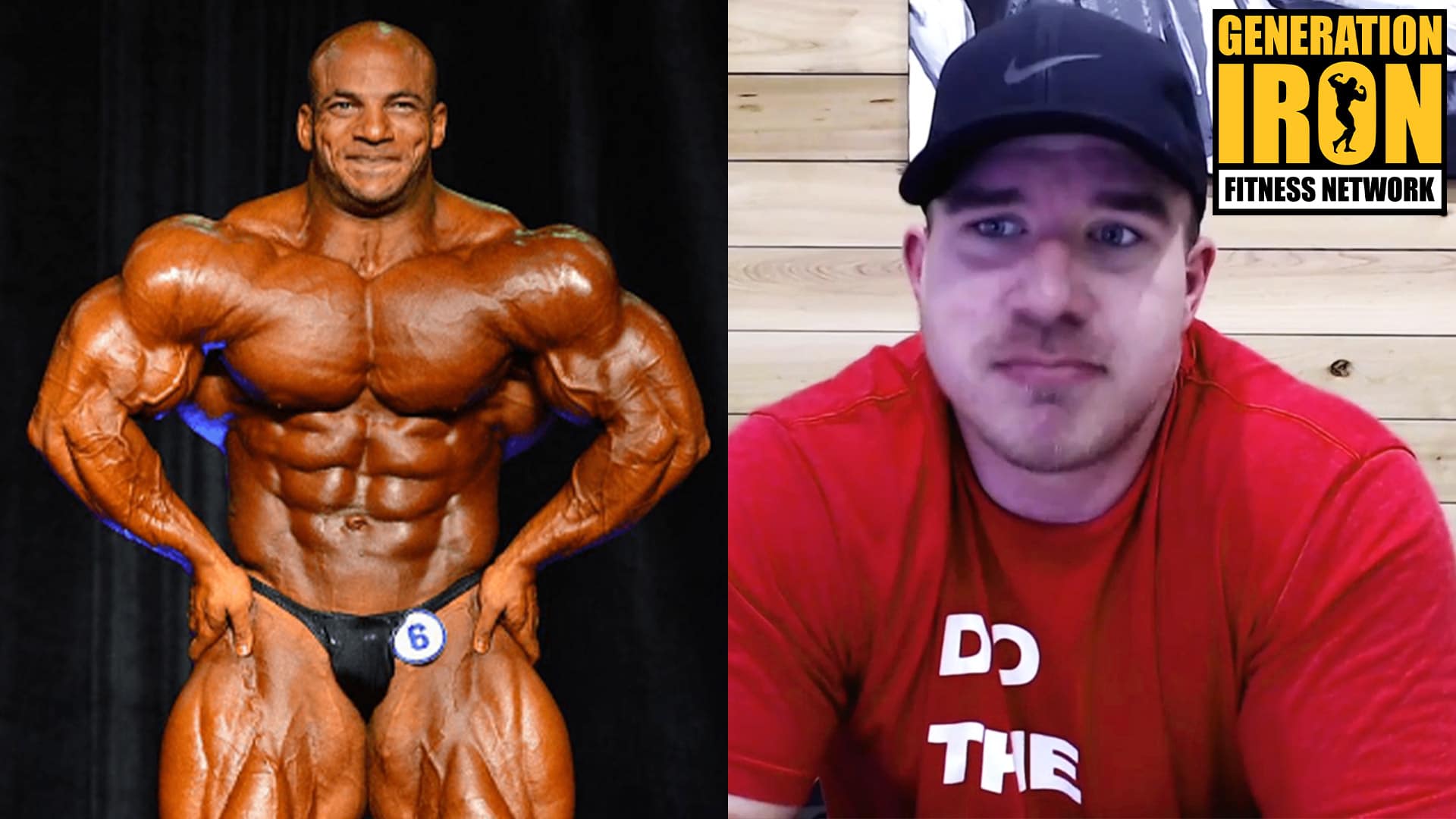
Matt Jansen Answers: Did Big Ramy Cement Mr. Olympia As A Size Game?
[embedded content]
Matt Jansen believes that Big Ramy further cemented Mr. Olympia as a battle of size… but there’s one wild card catch.
Matt Jansen is the trainer who has been working with Nick Walker during his rising success. Walker has been compared to Dorian Yates and his size is being praised as he continues to improve and prepare for the Mr. Olympia. With Big Ramy’s win in 2020, it seems he is further raising the bar when it comes to muscle mass. In our latest GI Exclusive interview, we ask Matt Jansen if Big Ramy has cemented Olympia as a game of size – and how that may help Nick Walker’s future.
During our conversation with Matt Jansen, we asked him how he first got into bodybuilding and coaching. What brought him to the place he is today – now known as an iconic modern coach responsible for fantastic physiques? Jansen goes into detail about his past as a bodybuilder and how his entire world was changed when he started focusing on a new training strategy that included a bigger focus on rest.
This change of pace opened Matt Jansen’s mind towards the power of coaching and training knowledge. He later then became mentored under Neil Hill – which began his path towards becoming the coach and trainer he is today. He’s now coaching one of the most threatening up-and-comers in the pro league – Nick Walker.
Nick Walker is a bodybuilder who brings unprecedented amounts of mass for his age. Still in his 20s, he already looks like a mass monster who had been training well into his 30s or 40s. Of course, he still has improvements to go – but he already has become highlighted as a big contender in the sport.
That’s why we also asked Matt Jansen about Big Ramy’s win at the Mr. Olympia 2020. Ramy represents true mass monster size unseen since Ronnie Coleman. While he has struggled to match the same kind of sharp conditioning that made Ronnie Coleman one of a kind – Ramy pulled it together for a truly rewarding physique last year.
Does Big Ramy’s win finally put the nail in the coffin when it comes to size? Has the Mr. Olympia proper become a battle for the most shockingly massive bodybuilder with good conditioning?
Matt Jansen believes so – and also jokingly admits that this will help Nick Walker’s future at the Mr. Olympia. If judges will all be pairing up competitors against Big Ramy in the center – having mass monster size will be of huge importance.
But Matt Jansen does also admit that the mass monster battle is not 100% set in stone. There is one wild card that can change the way judges lean – whether it be this Mr. Olympia or down the line. Matt Jansen believes that Shawn Rhoden presents a smaller but immensely aesthetic physique that can still overcome the likes of Big Ramy. Of course, Rhoden is not able to compete as of Mr. Olympia 2021.
If Shawn Rhoden were able to compete – Matt Jansen believes it can skew the Olympia lineup to favor both aesthetic and mass monster equally. Shawn Rhoden won the Mr. Olympia before against many mass monsters larger than him. He has the talent to do it again.
Alas, we don’t know when or if that will ever happen at this point. So for now it seems mass monster size will dominate as Big Ramy returns as the Olympia champion. Of course, the joy of competitive sports is that anything can happen. Nothing is set in stone – but for now Matt Jansen is feeling good about Nick Walker’s future pairing up against the likes of Big Ramy.
You can watch Matt Jansen speak in detail about his coaching origins, Big Ramy, and the Mr. Olympia in our latest GI Exclusive interview segment above.
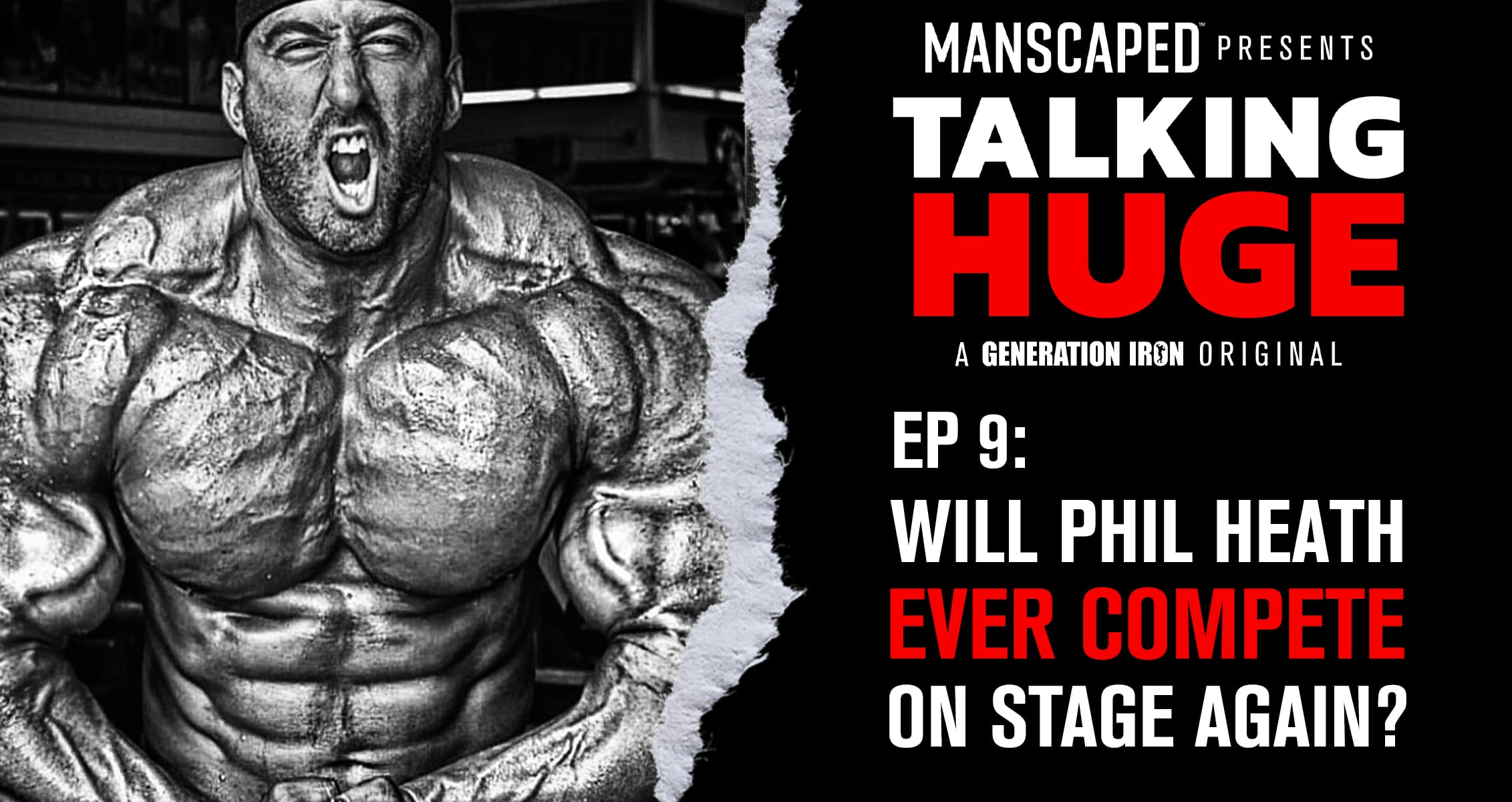
Talking Huge | EP 9: Craig Golias Weights In – Is Phil Heath Done Competing?
[embedded content]
Craig Golias and Vlad Yudin reflect on the life of John Meadows, talk about Phil Heath’s future, and debate if progress pics can be trusted.
Welcome to another episode of Talking Huge – a weekly digital series in which Craig Golias talks in-depth with Vlad Yudin on the latest trending topics in bodybuilding. Raw, honest, and uncut – Craig Golias shares his opinions on all things bodybuilding. In this episode, Craig Golias looks back on the life and times of the late John Meadows, talks about the physique updates of Phil Heath and Big Ramy, and the illusions of progress pictures.
After a few weeks away, Craig Golias returns to speak with Vlad Yudin to catch up on the latest and trending topics in bodybuilding. The biggest story, of course, is the tragic passing of beloved bodybuilder and coach John Meadows. While Craig did not know him personally – he was aware of the impact he had on the sport both as a bodybuilder and as a human being. Craig and Vlad also look at some of the latest progress pics that popped up over the past few weeks – focusing on Phil Heath and Big Ramy. Will Phil make another comeback? Does Ramy look on point for another victory? Let’s jump into it.
In Memory of John Meadows
The bodybuilding world was shocked earlier this week to learn that bodybuilder and beloved coach John Meadows had passed away. Meadows is known as one of the most iconic trainers in modern bodybuilding. But more importantly than that – he was a man with a kind personality that truly touched any person he met. In a sport that can be somewhat isolating, John Meadows made many connections. His kindness and optimism was felt strongly even during some of his hardest hurdles – such as the heart attack he suffered last year and recovered from.
While the exact cause of John Meadows death does not seem tied directly to bodybuilding, there’s no doubting that a mass monster bodybuilding lifestyle increases some risks. Vlad asks Craig Golias if Meadow’s passing made Golias think about his health and future. Is Golias worried that he may run a higher risk of serious health issues or death too soon?
In a surprisingly candid and quiet moment, Craig Golias admits that he does sometimes think about his choices and how it will affect his health. Especially in his younger years, Golias did anything possible to be HUGE. This included some not-so-healthy diet habits. There’s also no way around it – 300 pounds of muscle is still 300 pounds of weight that the heart has to pump blood through. That can take a toll.
The Future Of Phil Heath
Vlad Yudin and Craig Golias also discuss some of the biggest physique progress pictures that were released onto the internet. One of the biggest trending updates come surrounding Phil Heath. Many of his social media posts over the summer have showcased an increasingly conditioned physique. Some fans think he already looks better than his past two Mr. Olympia showings. This has led to speculation that he’s ready to come back yet again… and maybe win it.
But Craig Golias isn’t convinced. In fact, he’s convinced the other way around. He thinks that Phil Heath is done. That he will never win the Mr. Olympia again – and will likely not compete at the Olympia again. Even is Golias is wrong, he thinks that Phil Heath will simply place lower.
Craig Golias points towards every other great Olympia legend including Ronnie Coleman and Jay Cutler. Both are amazing athletes, as is Phil Heath, but after they fell from their throne – they never really got it back. Jay Cutler may have returned for a win at the Olympia after a short knock off – but ultimately when it was obvious he was declining he kept placing lower. Ronnie Coleman is the greatest bodybuilder of all time – but still succumbed to a lower placing on his last attempt at Mr. Olympia. Golias believes this is the point that Phil Heath is at now.
Progress Pics: Truth or Illusion?
Ultimately, this leads to Vlad and Craig talking about progress pictures overall. Do they help or simply hurt by raising expectations too far? Photos are a far cry from being under the hot lights of the competition stage. It’s easy for a bodybuilder to manipulate their physique with the right angle, lens, and alternate lighting on Instagram. It seems more often than not – the photos look more impressive than the final physique we see on stage.
Craig Golias agrees with this. It’s the double edged sword of social media. These kinds of frequent posts help make bodybuilders more of a brand. It helps them gain sponsors and a following and make money. But back in the day, bodybuilders often trained not knowing what anyone else would look like. The fans faced the same situation. That led to more shocking reveals at the actual competitions. It was exciting and also led to less overextended hype.
Wrap Up
There are far more topics discussed in this episode than we can cover in this article. You can watch Craig Golias and Vlad Yudin discuss other topics such as the consistent natty or not debate. Should athletes owe fans proof when they don’t believe natural claims? You can check it all out in the latest episode of Talking Huge above! Make sure to check out Talking Huge every week on Friday – only on the Generation Iron Fitness Network!
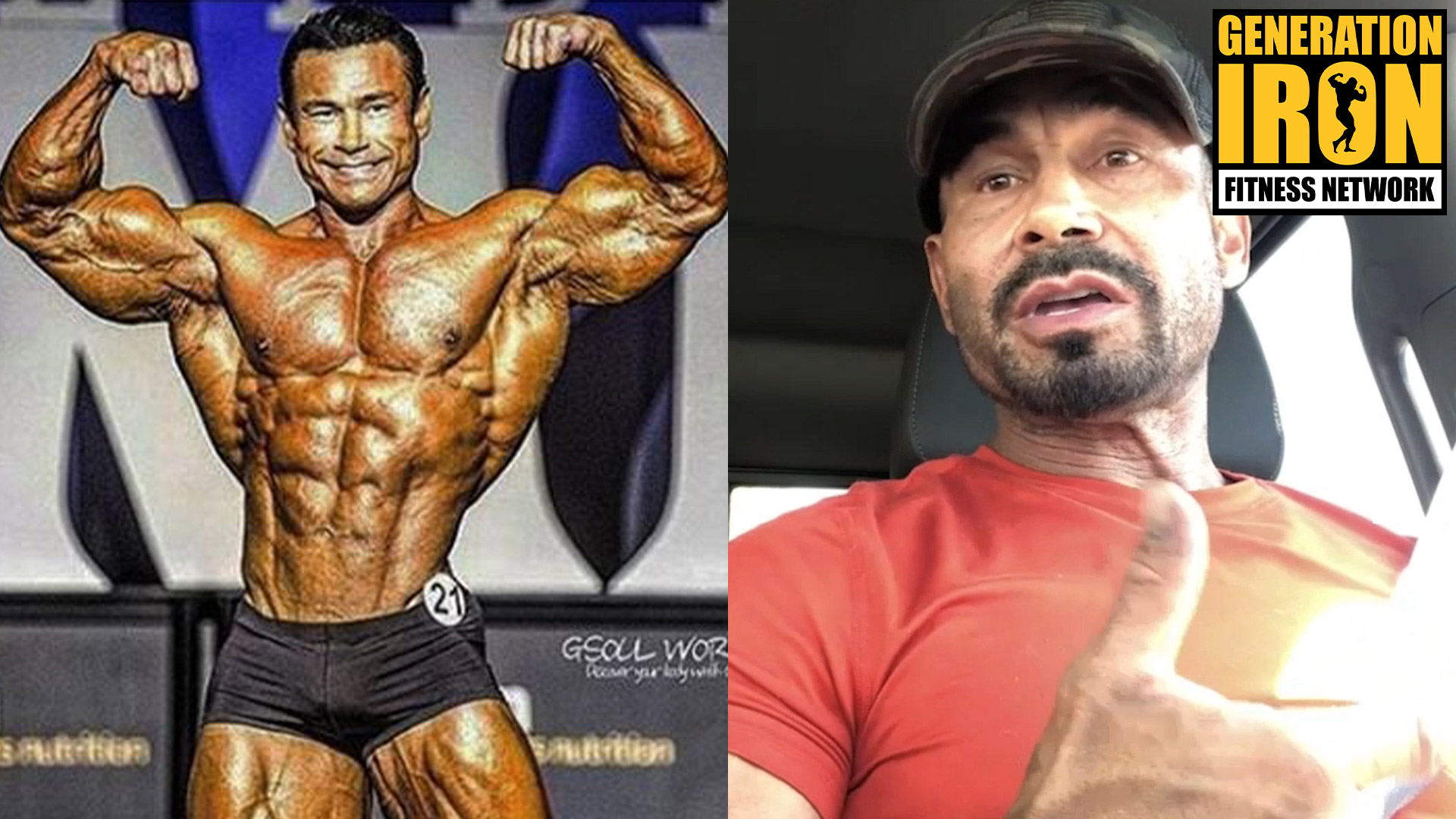
Danny Hester Returns Full Interview | Analyzing Nick Walker, Hunter Labrada, & Chris Bumstead
[embedded content]
Danny Hester returns for another full uncut GI Exclusive interview.
Danny Hester is a top level bodybuilder who has been around for a long time. He’s lived and competed through multiple eras of the sport, eventually earned an Olympia title, and trained numerous celebrities on the side. It’s safe to say that he has an in-depth perspective on bodybuilding over the past few generations.
Over a year ago, before the pandemic, we were able to sit down with Danny Hester and talk with him at length about all things bodybuilding. A lot has changed since then – and we had the opportunity to reconnect via video for another full length interview.
Over the past few months we’ve released multiple GI Exclusive segments from our interview with Danny Hester. This uncut full length interview including topics such as whether or not bodybuilding is a selfish sport, the future of bodybuilding in the form of Nick Walker and Hunter Labrada, and a critical analysis of Chris Bumstead’s Olympia 2020 win plus more!
Listen To Our Danny Hester Interview On The Generation Iron Podcast
Our full length interviews are now also in podcast form! Subscribe to the Generation Iron Podcast for candid, full length interviews with the biggest names in bodybuilding, fitness, combat, and strength sports.
Listen to the full Danny Hester interview here:
Danny Hester Answers: Are Nick Walker & Hunter Labrada Leading Towards A New Golden Era?
Danny Hester is extremely impressed by both Nick Walker and Hunter Labrada. Interestingly enough, he originally thought it would be a bad idea for Hunter to enter the world of competitive bodybuilding. He felt that the effort and sacrifice required would be wasted on an era that wouldn’t favor the Labrada gene pool. Hester admits he was wrong – as the competition appearances of Hunter have truly impressed him.
In fact, Danny Hester believes (or at least hopes) that this is a sign of a new upswing in bodybuilding. Perhaps the new era rising up will be more iconic after nearly a decade of controversial opinions on the current crop of athletes. Hester is hopeful that social media’s influence is finally reaping what was sown over the past decade. A new generation of people who were inspired by icons on social media are now old enough to compete.
Danny Hester hopes that social media will bring in more talented young bodybuilders. Perhaps athletes like Nick Walker and Hunter Labrada are a product of that very generation. It will be a like a new “boom” of bodybuilders changing the landscape more dramatically than we’ve seen in recent years.
Danny Hester: Chris Bumstead Won Olympia Due To Improvements But Not Perfection
Danny Hester doesn’t give his personal opinion on who had the best physique at the Classic Physique Olympia 2020. But he does suggest that the physique quality was very close between Chris Bumstead and Breon Ansley.
“Now even with the improvements, was it enough for him [Chris Bumstead] to beat Breon? That’s a whole different story,” Danny Hester states in our interview. While not confirmed -this seems to imply that Hester doesn’t view Bumstead’s physique as breakaway superior from Ansley.
He does understand, and truly believes, that Chris Bumstead won purely on his vast improvements. Hester himself gives Bumstead credit. He admits that the amount of improvements in Bumstead’s physique from the Olympia 2019 to 2020 was incredible. It’s hard for any pro bodybuilder to get that kind of improvement in one year. Bumstead pulled it off. The judges noticed. That gave Bumstead the edge.
Danny Hester relates this to his experience competing. He recalls a competition he competed in just three weeks before winning the Classic Olympia. He placed third due to feeling slightly sick on the night of the show. He was frustrated. So he worked extra hard in the final three weeks leading up to Olympia.
Ultimately, he won the Classic Physique Olympia. He thinks this is partially due to the extra effort he put in after feeling defeated. But he also thinks it’s because some of the same judges were at the earlier show and also judging at Olympia. They saw his improvements. They directly noticed how he changed. That helped him get an edge and win that year.
Wrap Up
We discuss many more topics with Danny Hester in our full hour long interview than what can be covered here in this article. Other topics include whether or not bodybuilding is a uniquely selfish sport, the biggest mistake bodybuilders make when trying to get six-pack abs, and if Hollywood typecasts actors with mass monster muscle. You can watch the full GI Exclusive interview with Danny Hester above.

Gunter Schlierkamp: Why Does The Olympia Champion Only Compete At Mr. Olympia?
[embedded content]
Gunter Schlierkamp answers: Should the Mr. Olympia champion compete more than once per year?
It’s almost completely commonplace for the Mr. Olympia champion to not compete again until the next Mr. Olympia competition. But this was not always the case, in past eras, the dubbed European Tour after Mr. Olympia would often showcase a series of events where the top five Olympia contenders, including the new champion, continued to compete. Gunter Schlierkamp, for example, even beat Ronnie Coleman in a competition shortly after Coleman had just won the Olympia title. Why did things change? In our latest GI Exclusive, Gunter Schlierkamp shares his thoughts as to why the Olympia champion only competes once per year.
For the past few decades, the winner of the Mr. Olympia would typically only compete once per year. For example, Phil Heath would win the big show and then not compete again until the following Olympia competition. We asked Gunter Schlierkamp why this is the case and his answer shows both sides of the argument.
At first, Gunter Schlierkamp’s reaction was that of not understanding why the Mr. Olympia champion only competes once per year. He explains how, typically, a bodybuilder’s conditioning remains strong for three weeks after a show. If they land on the Mr. Olympia on point – why would they not compete in a few more shows afterwards? Even if it’s just for some additional prize money?
Gunter Schlierkamp reflects on previous eras, where the traditional European Tour would occur right after the Mr. Olympia. These would typically be back to back shows for multiple weekends in a row. The biggest names from Olympia would compete and often the Mr. Olympia champion would be among them.
To some degree, the European Tour has changed. There are less big pro shows that occur immediately after the Mr. Olympia – either due to the pro shows getting more spread out or disappearing completely. If the pro shows are not in the immediate weeks after the Olympia, it would make sense for the champion to avoid it.
That being said, Gunter Schlierkamp also presents another side to the topic. He understands that the Mr. Olympia prize money is very high – more than enough for a year’s worth of salary. On top of that, training and succeeding at being the best in the world takes its tole. He likens it to a gold medal Olympic athlete. After a runner wins the gold at the Olympics, that athlete will likely not try to reach that champion-level time again for quite some time.
Perhaps it is smart for the Mr. Olympia champion to only compete once per year. This allows the champion to only focus on one thing – winning the Mr. Olympia again. They can’t use depletion from another pro show event earlier in the year as an excuse for a lackluster presentation at Olympia. Why even take the risk? Especially if the prize money (and sponsorships) allows for the athlete to not need to compete again.
You can watch Gunter Schlierkamp’s full thoughts on how often the Mr. Olympia champion competes in our latest GI Exclusive interview segment above!
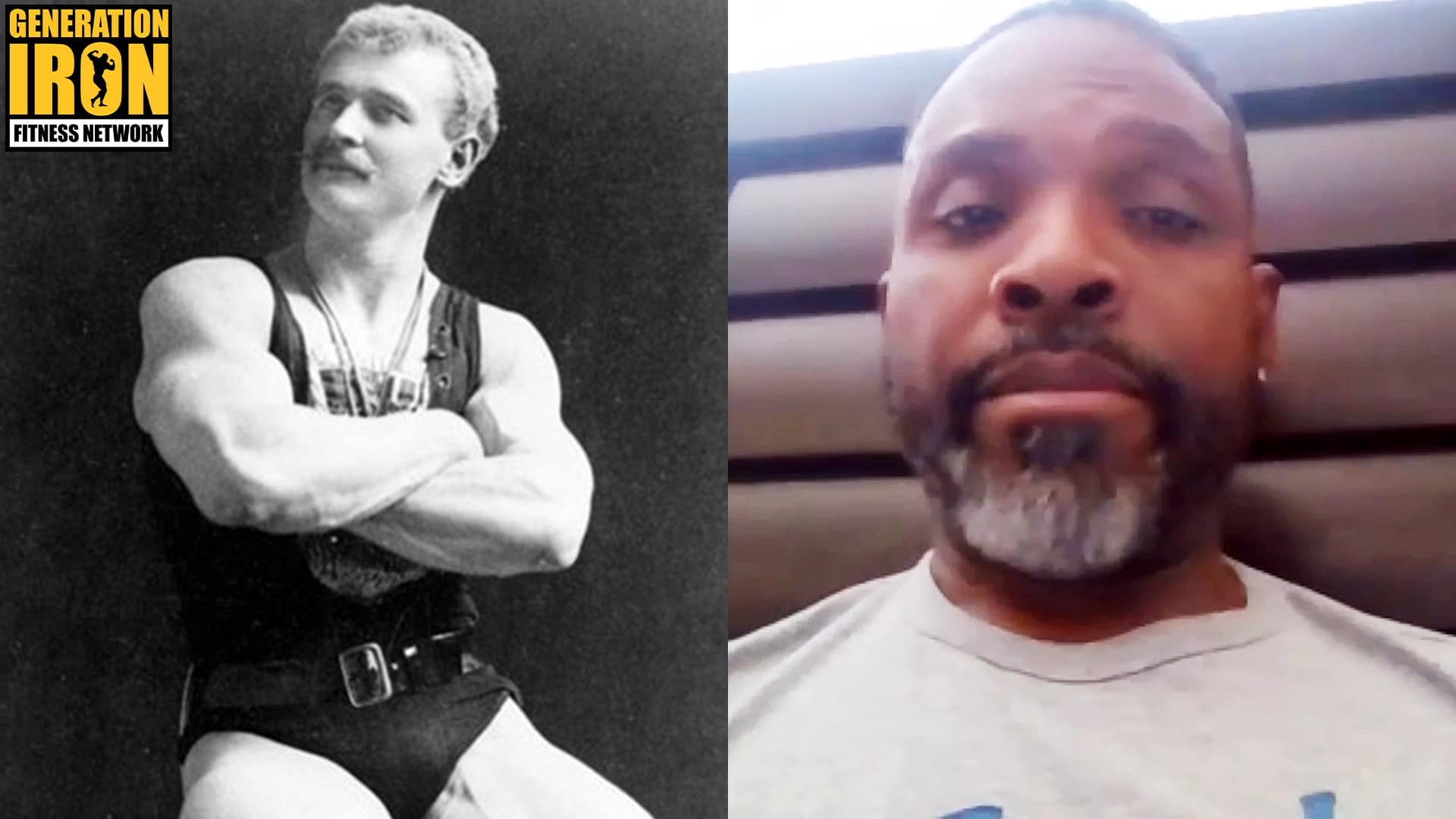
Melvin Anthony: Bodybuilding History And Competitive Hunger Are Largely Missing Today
[embedded content]
Melvin Anthony believes that bodybuilders today don’t know enough about the sport’s history.
Melvin Anthony has previously stated in our earlier interview segment that bodybuilders today train very hard but could be training harder. Overall though – he believes that bodybuilders today are still extremely hard working and talented. The bigger problem, in his opinion, is that modern bodybuilders do not know enough about history, do not have enough camaraderie, and are not competitive enough. In our latest GI Exclusive, Melvin Anthony goes into detail about how a lack of bodybuilding history and hunger is hurting modern bodybuilding.
In this segment of our GI Exclusive interview, we started off by asking Melvin Anthony his thoughts on Women’s Bodybuilding. It’s a division that was near death only a few years ago but has since been revived by its return at the Olympia weekend. Anthony ultimately didn’t touch much on this topic in his answer. Instead, he expanded on a bigger issue he finds with modern bodybuilding. An issue that is directly related to the trials and tribulations of Women’s Bodybuilding and perhaps other divisions.
Melvin Anthony believes that Women’s Bodybuilding gets a bad rap for a few reasons – but the biggest is a lack of respect for muscle above all else – and a lack of respect for history. While many bodybuilding fans and young competitors certainly know the legends in the sport – Anthony worries that there is a lack of extensive knowledge of bodybuilding history. How can the new generation of bodybuilders break barriers if they don’t know what was done before them? How can you break the rules before you know where the rules came from?
Melvin Anthony had previously stated to us that bodybuilders train very hard today – but could be training harder. His words in our new segment today are an extension of that idea. He believes that it’s a lack of historical bodybuilding knowledge that prevents bodybuilders from training even harder and breaking new ground. Attention spans are so thin due to the instant response of internet and social media. It causes people to lose sight of the past. At least, that’s what Anthony believes.
The biggest irony behind this is that the internet can be used to gain more information more than ever. Melvin Anthony points out that bodybuilders today have the entire history of bodybuilding at their fingertips. Posing routines and competitions from each era can be watched on YouTube. Bodybuilding greats can be studied in a play-by-play detail. Not just the biggest legends but also the dozens of other great competitors who made big impressions in their era but perhaps didn’t land Ronnie Coleman status.
On top of this, Melvin Anthony believes that the hunger in competition has diminished. While his reasoning is purely anecdotal, he worries that bodybuilders are too willing to settle for sixth or third place before they even actually compete. Real champions, Anthony argues, will always believe they are the best. They will go into every competition thinking they will win until they don’t. If a competitor goes in thinking, “I hope to at least get third place.” They aren’t hungry enough.
Of course, there are likely still bodybuilders today with strong wills and hungry beliefs of victory. But from Melvin Anthony’s personal experience looking at modern bodybuilding – he doesn’t see it the same way as the past. Is he right? Or is he simply not looking in the right places? Or perhaps he’s not as in tune with current bodybuilding as he’s gotten older? It’s impossible to say with 100% certainty until this new era recedes into the past and is looked back on in retrospect.
You can watch Melvin Anthony talk about bodybuilding history and hunger to compete in our latest GI Exclusive interview segment above!
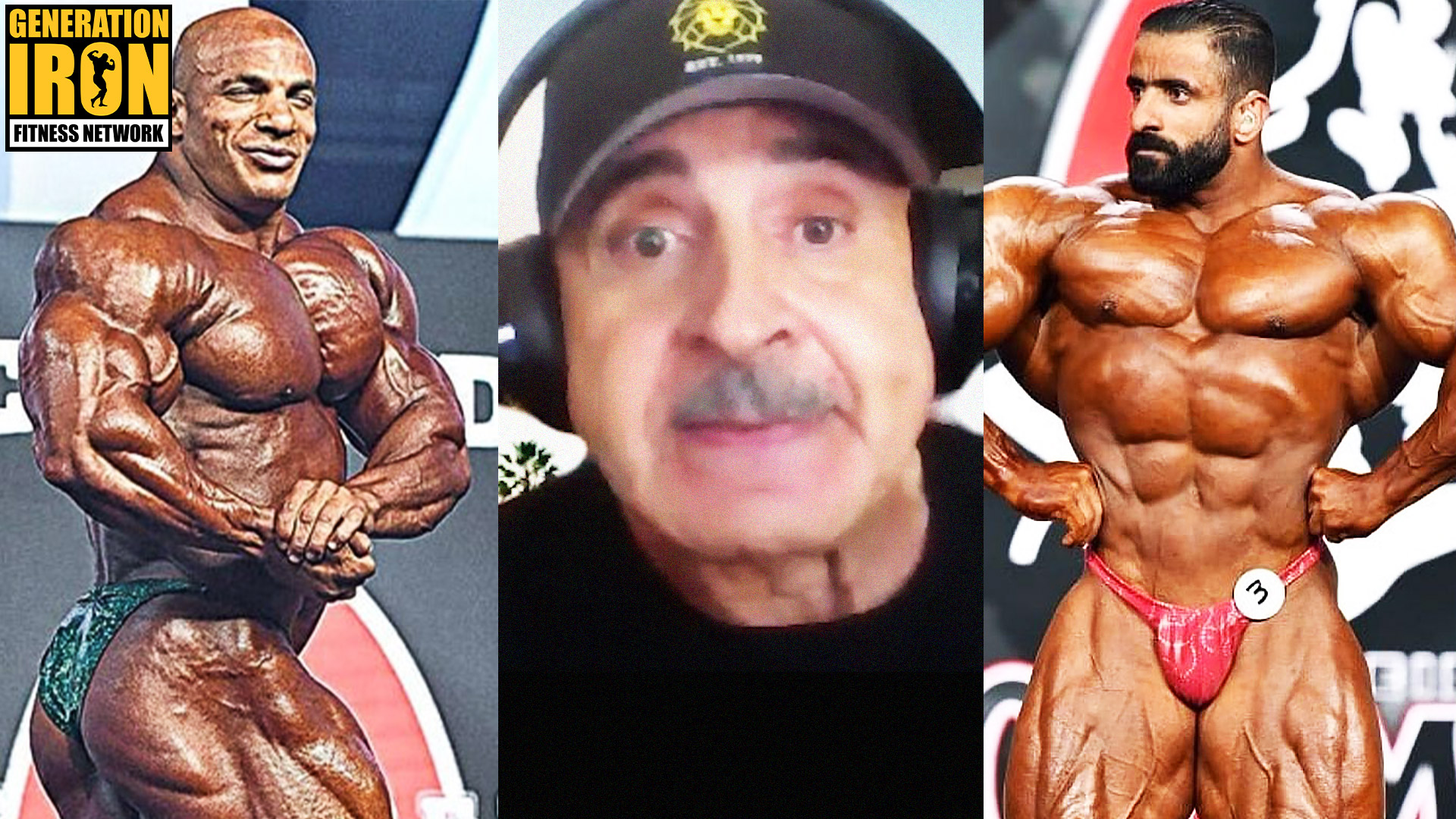
Samir Bannout Answers: Is There A Middle East Movement Dominating Bodybuilding?
[embedded content]
Samir Bannout analyzes the rise of Middle Eastern bodybuilders and the future of bodybuilding champions.
Samir Bannout has the distinction of being the first Middle Eastern bodybuilder to win the Mr. Olympia. A lot has changed since then. The rise of the camel crew and an exceptional focus put on bodybuilders who train in Dubai has increased the dominance of Middle Eastern pro bodybuilders. Most recently, Big Ramy, hailing from Egypt, won the Mr. Olympia title. In our latest GI Exclusive interview, Samir Bannout analyzes whether or not this is a Middle East movement that will dominate bodybuilding for years to come.
Samir Bannout is proud to be the first Middle Eastern bodybuilder to win the Mr. Olympia. He also has stayed extremely passionate and focused on the sport of bodybuilding ever since his retirement. Event today, he dedicates himself to further helping improve and educate new generations of bodybuilders to support the sport. So what does he think of the rise of Dubai as a mecca for bodybuilding? And of Big Ramy’s win at the Mr. Olympia 2020? Does he see this as a true movement of Middle Eastern bodybuilding?
Samir Bannout admits that there has been a cultural shift in competitive bodybuilding. Dubai has become a hot spot for bodybuilders. While not all of them are actually from the Middle East, Dubai has become a new mecca that promises unreal transformations for competitors who train there. Brandon Curry is the most notable man to train in Dubai, transform his physique, and become a Mr. Olympia champion.
But of course, this new sort of mecca is also benefiting competitors from the Middle East. Big Ramy is now our current Mr. Olympia champion and we’ve seen the likes of Hadi Choopan and Kamal Elgargni show extreme dominance in the sport.
Samir Bannout is unsure if this is a true long term movement though. He points out that bodybuilding has always been a very diverse and international sport. He’s personally seen many rising bodybuilders across a variety of countries that have him excited for the future of the sport.
On top of that, the past year of pro bodybuilding was marred by COVID-19.Big Ramy certainly deserved the Mr. Olympia and showed his best physique. But there will always be a “what if” about 2019 and 2020. We have no idea how the virus affected the top pros personal lives and training. Samir Bannout believes that perhaps 2021 will be bigger indicator. Will Big Ramy and Hadi Choopan continue to thrive at this year’s Mr. Olympia?
During this interview clip, Samir Bannout also talks about his own success as being the first Middle Eastern Mr. Olympia – and reflects on whether not he retired too soon. As he had mentioned previously, he felt slighted by the sport after his 6th place finish in 1984. This got into his head and took the fun out of the sport. He often wonders if he could have stuck with it and eventually moved past the negativity.
You can watch Samir Bannout talk about the rise of Middle Eastern bodybuilding in our latest GI Exclusive interview segment above!
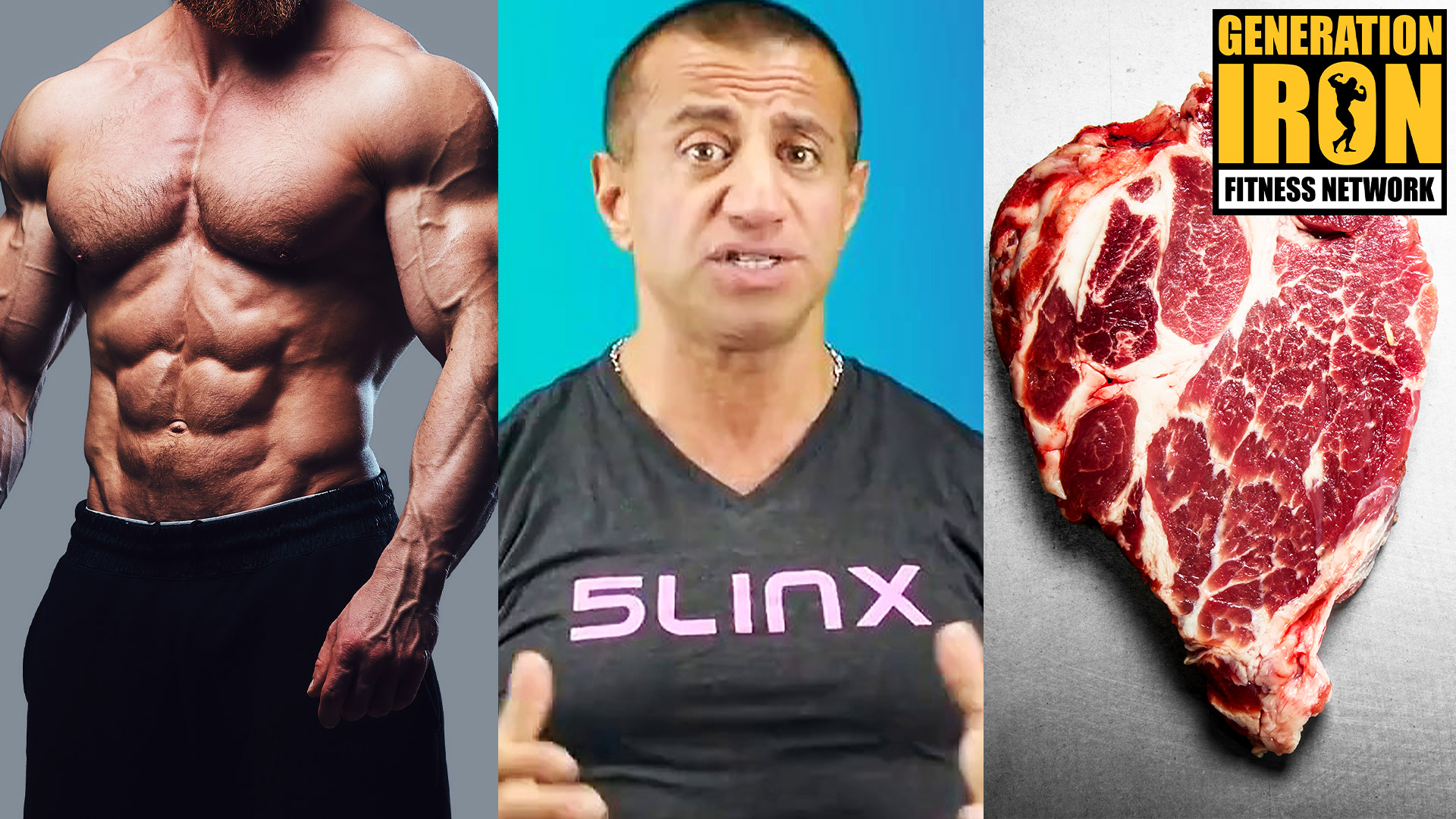
George Farah: Don’t Eat More Animal Protein Than 25% Of Your Caloric Intake
[embedded content]
George Farah talks about the big misconceptions about animal protein consumption in bodybuilding.
George Farah is a legendary bodybuilding coach who has used his later years to warn bodybuilders about big misconceptions that can lead to massive health risks. He’s already spoken with us about the risks of insulin and unhealthy bulking. Now he’s warning bodybuilders about eating too much animal protein. In our latest GI Exclusive interview, George Farah explains why bodybuilders should not eat more animal protein than 25% of their entire caloric intake.
Protein is a main staple of bodybuilding. This is the most basic knowledge about bodybuilding. It’s the first thing everyone learns when trying to build muscle. The easiest way to get protein comes from animals. Old school images of Arnold Schwarzenegger eating massive amounts of steak and eggs come to mind from Pumping Iron.
But as science advances, we are starting to learn different ways of obtaining protein beyond animals. Schwarzenegger himself has become a proponent of veganism and was a part of the documentary The Game Changers. George Farah also agrees. Bodybuilders are eating too much animal protein and it’s bad for their long term health.
George Farah is not saying that bodybuilders should become vegan or vegetarian. Instead, he’s emphasizing that animal protein is being abused with much too high consumption compared to their overall caloric intake. This, Farah claims, can lead to long term issues with your kidneys down the road. He’s experienced it himself, between liver and kidney problems and having cancer, Farah focuses now on longevity in bodybuilding.
The biggest thing George Farah wants to make clear is that he’s not saying to avoid all meat. He doesn’t want to be labeled unrealistic by claiming vegan bodybuilders can achieve the same mass as meat eaters. But he does believe that the amount of animal protein bodybuilders eat is beyond what is necessary. It takes more focus on your diet – but you can still hit the right level of protein without relying majorly on animal products.
Here’s what George Farah stated in our latest interview:
“If you get a bunch of people [doctors/experts] and sit down and talk to them. They will all agree with you that if you go more than 25% of your daily caloric intake from protein. You’ll have some type of problem… it’s been proven for longevity it’s not good to have more than 25% animal food.”
More specifically, George Farah ties in the high protein consumption with anabolic steroids. He claims that going over 25% of animal protein in your diet in combination with anabolic steroids will increase chances significantly for kidney damage.
“They say where there’s a smoke, there’s a fire,” George Farah states in our interview. He continues, “There’s a reason a lot of bodybuilders have kidney problems. What’s the reason? The use of anabolic and high protein intake. Period. Period!”
You can watch George Farah go into detail about protein intake and bodybuilding by watching our latest GI Exclusive interview segment above!
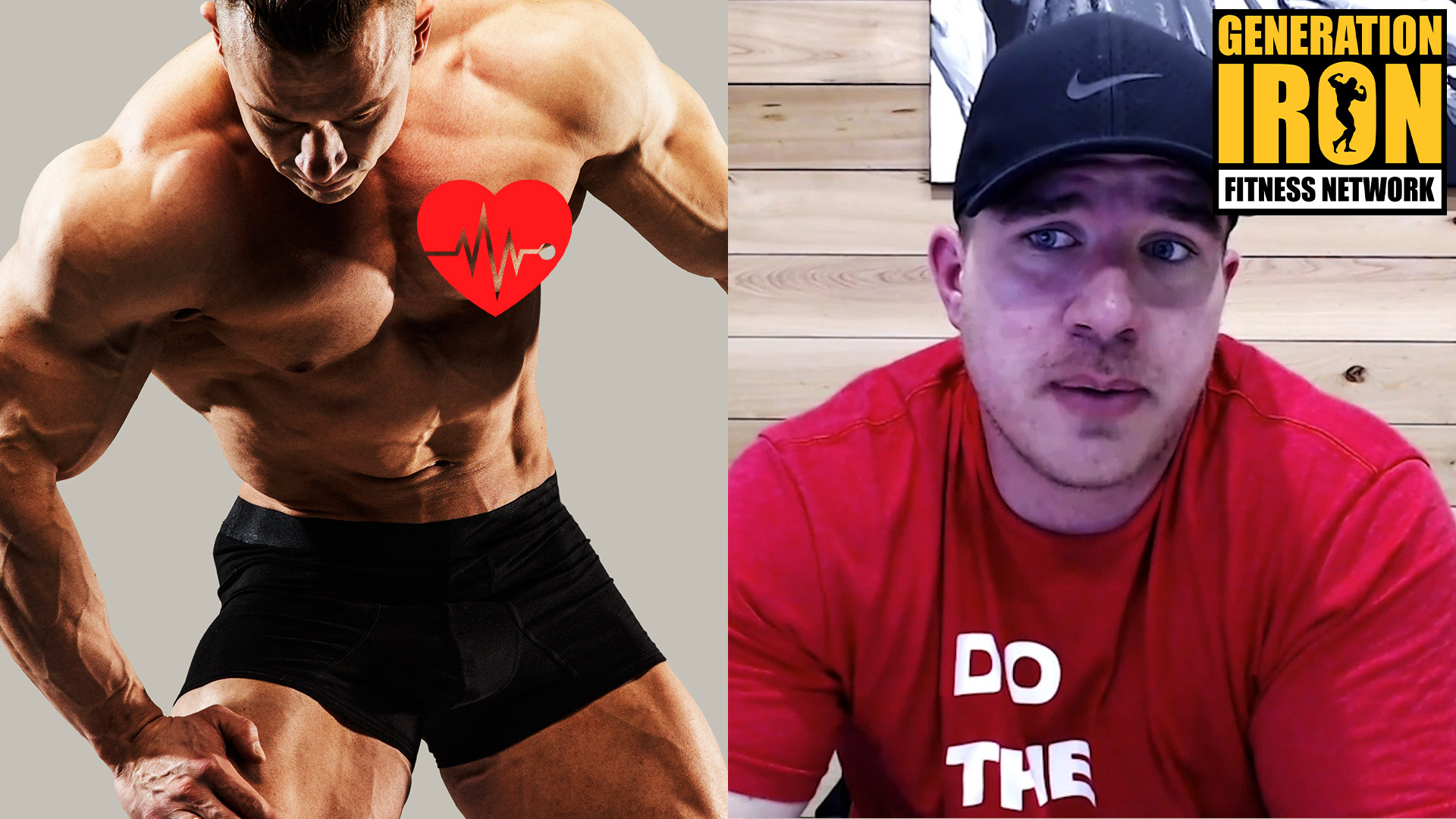
Matt Jansen: The Biggest Health Issues In Bodybuilding That Everyone Should Know
[embedded content]
Matt Jansen talks about the health risks and rewards of competitive bodybuilding.
Matt Jansen is a powerhouse bodybuilding coach who has been building an iconic reputation in the industry for his knowledge and success with athletes. He is most recently best known for training Nick Walker, who just landed a first place victory at the New York Pro 2021. We used our time speaking with Jansen to dig deep into his well of knowledge. In our latest GI Exclusive interview, Matt Jansen shares important details on the biggest bodybuilding health risks all competitors should be aware of in their career and lifestyle.
During our time speaking with a wide variety of athletes, experts, and coaches – we’ve always made a point to ask a very point blank question. Is pro bodybuilding an extreme sport with unavoidable health risks? During our conversation with Matt Jansen, we asked him this question as well.
Instead of speaking in extremes, Matt Jansen answered our question with context and details to put everything into perspective. In short – yes, a bodybuilding lifestyle can lead to health risks and issues. In fact, Jansen believes that in order to be the best in any professional sport, an athlete puts themselves at risk. By definition these competitors are trying to push the boundaries of what is athletically possible. That comes with possible downsides.
That being said, this doesn’t mean that pro bodybuilding is a death sentence or a health nightmare. There are many lifestyles that all people on this earth engage in that are risky. The amount of sugar and salt that is standard in most foods we eat in markets all pose a risk. The amount of alcohol that most places find socially acceptable pose risks. Bodybuilding isn’t exactly the same as those things – but in general, it’s a lifestyle that many accept that can pose certain risks.
That’s why Matt Jansen is an advocate about being informed and trying to be as healthy as possible as you move along your bodybuilding journey. The bigger problem is less the inherent risks – and more the lack of precautions taken to mitigate those risks. To help, Jansen identifies the two biggest health risks that all bodybuilders should know about.
High blood pressure and not being aware of glucose levels are the two biggest issues within bodybuilding. This is largely because it’s “easy to shut your mind off,” as Jansen puts it, to the way these two things can slowly “wreak havoc on your body.” Of course, high blood pressure is also a specific issue that most Americans have regardless of bodybuilding. The bodybuilding lifestyle certainly doesn’t help – when you’re not paying attention to the details.
Both of these two issues can lead to damaging your heart, your liver, and your kidneys. This kind of organ damage in the long run can lead to serious health problems down the line – and for some even death. That might sound alarming – but it’s not one-to-one that bodybuilders will suffer these issues. These issues are more likely to happen with a bodybuilding lifestyle if you don’t pay attention to the details of your diet and supplements that are being put in your body.
You can watch Matt Jansen go into detail about health in bodybuilding and the importance of the details behind a bodybuilding diet and lifestyle in our latest GI Exclusive interview segment above.
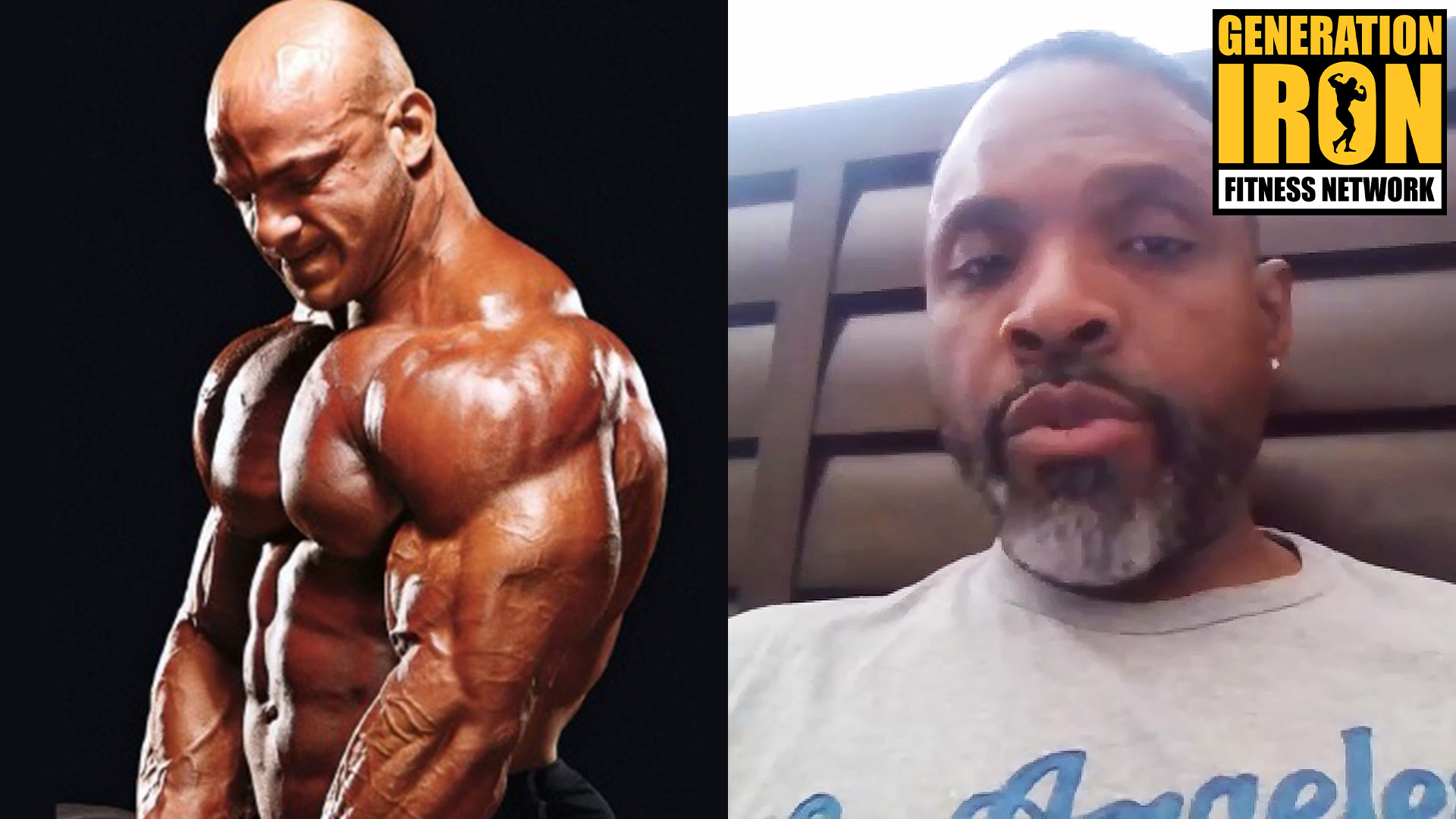
Melvin Anthony: How To Beat Big Ramy At The Mr. Olympia
[embedded content]
Melvin Anthony breaks down how Big Ramy needs to be more than “a little off” to lose Mr. Olympia. He needs to be knocked out.
After many years of close calls, Big Ramy has finally become the Mr. Olympia champion many fans hoped he would be. Now with the 2020 Olympia under his belt, he’s entering the biggest competition of the year as a returning champion. Will he be hard to defeat? Or will his past challenges with conditioning plague him in 2021? In our latest GI Exclusive interview, Melvin Anthony details what it will take for Big Ramy to lose the Mr. Olympia 2021.
During our conversation with Melvin Anthony, we asked if he had watched the Mr. Olympia 2020 last year. He does indeed continue to follow bodybuilding and was incredibly impressed by Big Ramy’s physique. He believes that the athlete certainly deserved the champion title.
But what does the future hold for Big Ramy? Will he continue to reign as champion or another one shot champion? Melvin Anthony doesn’t claim he can read the future – but he does look back at past champions to predict what it will take for Big Ramy to be defeated.
Melvin Anthony knows one thing is certain, an Olympia champion almost always maintains some sort of reign and repeat victories. There are exceptions and the past few years actually showcased that in the form of Shawn Rhoden and Brandon Curry. That being said, the majority of bodybuilders who win Mr. Olympia go on to win multiple in a row.
So while this is not a guarantee for Big Ramy, Melvin Anthony believes that it will take more than him being “a little off” to lose the title. Judging is meant to be as objective as possible. At the end of the day, though, it’s a subjective sport. Judges will see Big Ramy differently than in previous years. He’s no longer a competitor hungry to win his first Olympia, he’s now a returning champion.
So Melvin Anthony believes that the only way Big Ramy will lose is if he is defeated by a “knock out.” What he means by this is that either Ramy has to make significant mistakes to his physique or someone has to show up with a next-level physique than we’ve seen so far. Big Ramy has a lot of mass on his side – but his conditioning is where he has struggled in the past. No one will be him on pure mass alone – so all other competitors will need to be more perfect than they ever have been in order to surpass Ramy. Or again as we mentioned earlier – Big Ramy would have to make a huge mistake.
Melvin Anthony acknowledges that everyone on the stage has a great challenge ahead of them. Big Ramy has the pressure of either matching his 2020 physique or making it even better. The other competitors all need to try and contend with Ramy’s massive size.
You can watch Melvin Anthony speak in full detail about Big Ramy and the future of Mr. Olympia in our latest GI Exclusive interview segment above!
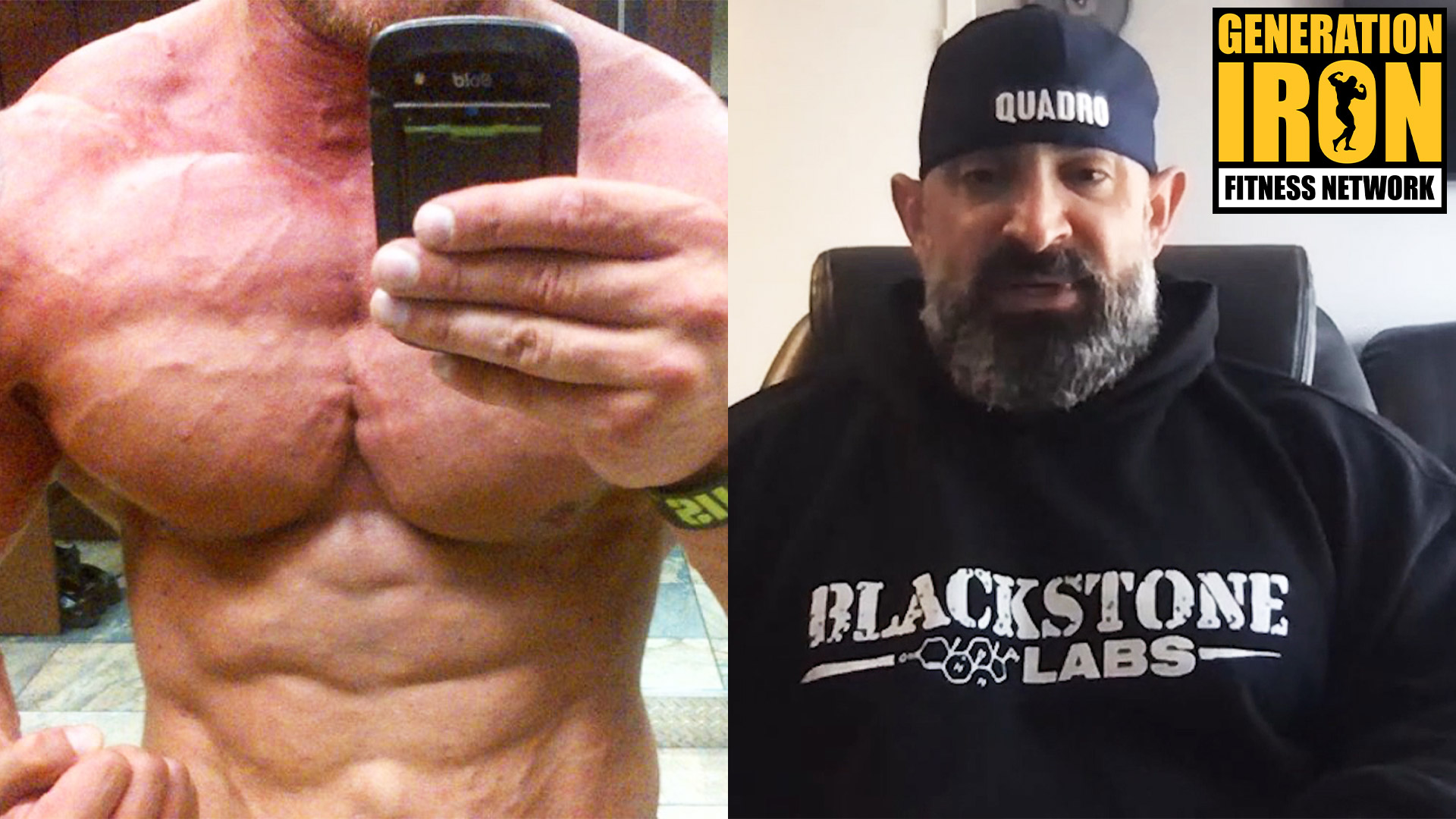
Guy Cisternino: Love For Social Media Is Replacing Love For Training In Bodybuilding
[embedded content]
Guy Cisternino shares one of the biggest things he hates about bodybuilding today.
Guy Cisternino is a pro bodybuilder who is not afraid to speak his mind – even if it’s not what people want to hear. That’s why we asked him to share one thing he loves about modern bodybuilding… and one thing he hates about modern bodybuilding. In our latest GI Exclusive, Guy Cisternino details how he loves the camaraderie of bodybuilding but hates how social media has changed training.
In our first GI Exclusive segment with Guy Cisternino, we discussed the viral video showcasing him confronting people at the gym. He was in the middle of a set and was angry due to younger gym patrons filming aggressively close to the current exercise machine Cisternino was using. Ultimately, he was able to explain himself and patch things up with the young gym-goers.
But the problem that started it, filming constantly in the gym during training, is the biggest thing that Guy Cisternino dislikes about modern bodybuilding. In his own words, he believes that, “the love for training is becoming more a love for social media.” What he means by this is that young bodybuilders see training more as “content” rather than a means to improving their physique.
This is, of course, a very generalized statement. But it tracks with what Guy Cisternino was telling us in a previous segment as well. Cisternino loves hardcore focused bodybuilders. Branch Warren is one of his biggest inspiration. Today, he sees less of that and more young bodybuilders constantly filming their training and filming random content in between sets. Cisternino worries that young bodybuilders are trying to skip the line and become famous before they accomplish major victories as a competitive bodybuilder.
Social media has also proved that you can be successful without ever competing. Influencers like Rich Piana, Bradley Martyn, and Craig Golias find success through social media without having to compete on the pro level. Guy Cisternino argues that those individuals are the outliers. The problem is everyone wants to be the outlier instead of doing the hard work of becoming a successful pro.
“They’re trying to be in our shoes as professionals before even stepping on stage. And it’s frustrating,” Guy Cisternino states in our interview. He continues:
“And yeah, in my eyes, and I don’t think it’s bad to say But for me to say it’s not disrespectful to think that a 20 year old kid has a camera crew filing himself working out because he thinks… he’s trying to be somebody on the same level as somebody like me? What I do? It’s crazy. It’s like, I would never act like I’m a professional football player on social media because I’m not a professional football player. But you’re going to act like you’re a professional bodybuilder or professional trainer and you’re 20 years old and have a camera crew? Like work for what you have.”
This is a divide between generations that exists beyond bodybuilding. A portion of millennials and Gen Z grew up a world where it feels like anyone can become famous because sites like YouTube and Instagram have a low bar for entry. Namely, it’s free to upload and broadcast content. Once that content became monetizable – newer generations discovered there was money to be made via influencer success.
But much like fame in any era – it can only be a small percentage who actually achieve it. Now with the bar for entry lower, it at least seems like more individuals are attempting to pursue it. There’s nothing inherently wrong with this. But when it enters tried and true traditions or public spaces – it can clash with the old way of doing things.
Is one inherently worse than the other? Time and reflection on an entire generation will be the true teacher. But for Guy Cisternino, it’s simply something he hates about the current state of bodybuilding. It’s not wrong. It’s not right. But it’s something that clashes with what he loves about bodybuilding – the passion for training above all else.
You can watch Guy Cisternino explain his full comments in our latest GI Exclusive interview segment above!
